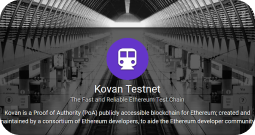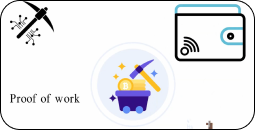Goerli is a testnet for testing validating and staking. The Goerli network is open for users wanting to run a testnet validator. Stakers wanting to test protocol upgrades before they are deployed to mainnet should therefore use Goerli.

Testnets
The Ethereum test network, often referred to as a testnet, serves as a meticulously crafted infrastructure designed to closely mirror the mainnet environment, facilitating thorough testing of contracts and protocols before their deployment on the live Ethereum network.
Active Testnets
-
Sepolia
-
Holešky
Sepolia
Sepolia is the recommended default testnet for application development. The Sepolia network uses a permissioned validator set. It's fairly new, meaning its state and history are both quite small. This means the network is quick to sync to and that running a node on it requires less storage. This is useful for users who want to quickly spin up a node and interact with the network directly.
- Closed validator set, controlled by client & testing teams
- New testnet, less applications deployed than other testnets
- Fast to sync and running a node requires minimal disk space
Holešky
**For Validators and Infra Only**
Holešky (Holešovice Testnet) is the first long-standing, merged-from-genesis, public Ethereum testnet. Holešky will replace Goerli as a staking, infrastructure and protocol-developer testnet in 2023. For testing decentralized applications, smart contracts, and other EVM functionality, please use Sepolia!
Deprecated Testnets

Goerli
Flavour
PoA/PoS
Genesis
Q3/2018
LTS
No
EOS
Q2/2023

Kovan
Flavour
PoW
Genesis
Q1/2017
LTS
No
EOS
Q4/2019
The DoS attack on Ropsten led to the birth of two new testnets, Kovan is one of them. This testnet was created by the Parity team in March 2017. The Kovan testnet uses the Proof-of-Authority consensus mechanism which abandons decentralization for security, by maintaining a small group of trusted signers and validators, who ensure the creation of new blocks in the network by staking their reputation.

Ropsten
Flavour
PoW
Genesis
Q4/2016
LTS
No
EOS
Q4/2022
Ropsten is the third testnet and follows the Proof of Work consensus mechanism. This testnet was named after a subway station in Stockholm, Sweden. It has a chain and network ID of 3. This testnet was launched in late 2016 due to multiple issues in the old testnet and finally replaced The Morden Testnet. Clients Support: The Ropsten test network supports all major Ethereum clients such as Geth, Parity (deprecated), Nethermind, Hyperledger Besu and even the Akula, the latest Ethereum client.

Morden
Flavour
PoW
Genesis
Q3/2015
LTS
No
EOS
Q4/2016
As the public Ethereum main network was launched back in July 2015, there was a need for a new Testnet which could go hand-in-hand with the mainnet. This was the basis for the developement of the Morden Testnet which eventually replaced the Olympic Testnet. This testnet was also based on PoW consensus mechanism. The Morden Testnet had a network ID of 2 and was the only Testnet for over a year.

Olympic
Flavour
PoW
Genesis
Q1/2015
LTS
No
EOS
Q3/2015
Olympic Testnet was to reward people who try to test the limits of the Ethereum blockchain during the pre-release period, spamming the network with transactions and doing crazy things with the state, so that the developers could see how the network holds up under high levels of load. At the same time, application developers, data providers, exchanges, and users were encouraged to develop and deploy on the testnet and run nodes.

